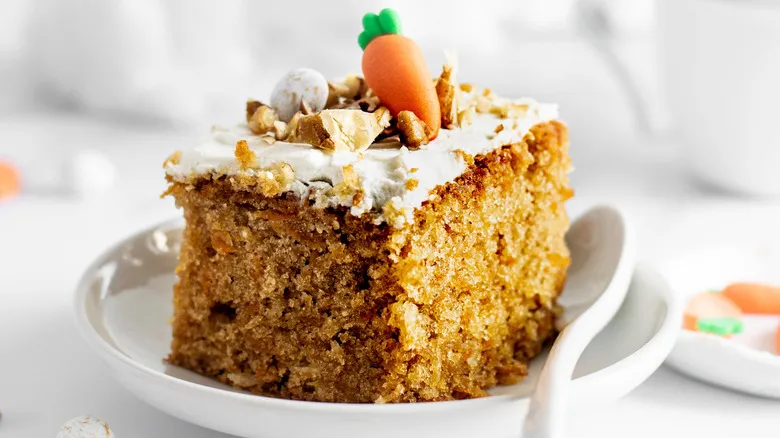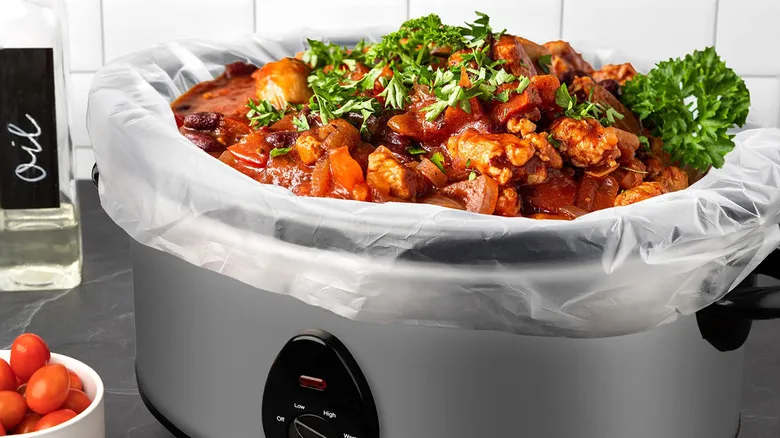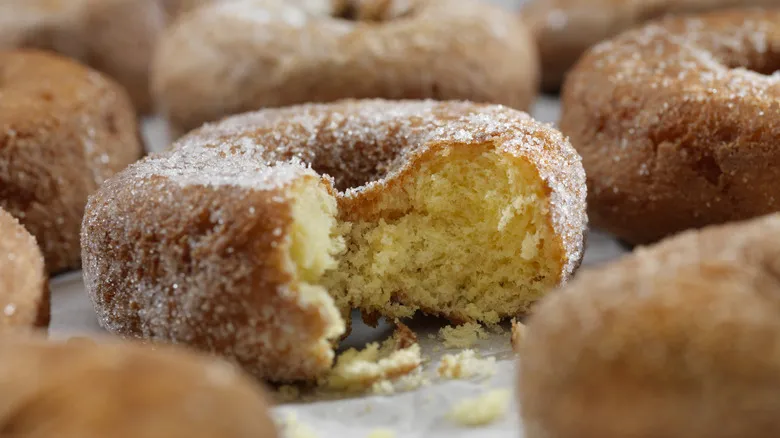1. Be mindful while grating
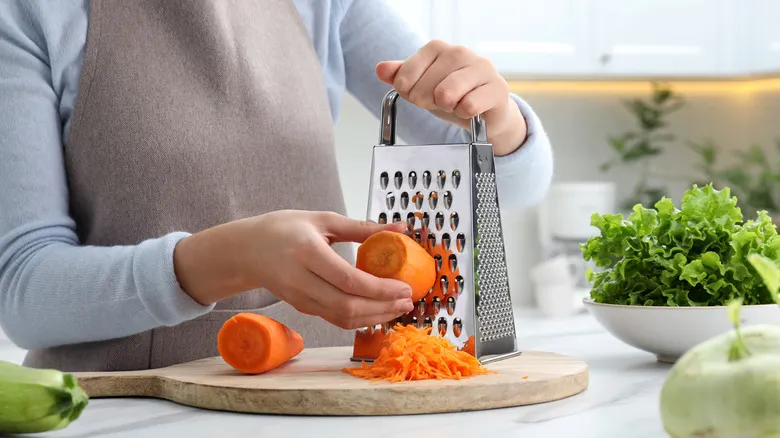
The primary component of carrot cake is, of course, carrots. These vibrant orange vegetables should be incorporated into the batter, allowing their natural sweetness to shine while contributing both substance and moisture to the spiced cake. To achieve a successful final product, the method of grating the carrots is crucial.
Opt for large carrots instead of baby ones, and ensure they are thoroughly washed and peeled to avoid any tough or dirty skin. Use a box grater, specifically the side with the small holes, for grating the carrots for your cake. While the larger holes might suffice, it's safer to stick with the smaller ones. You might be tempted to use a food processor, thinking it will save time, but the problem is that it won't shred the carrots evenly. This could result in bites of cake that contain either perfectly grated pieces or large chunks of carrot. Additionally, the bigger shreds may not bake uniformly, leaving some with a texture that’s too firm for a dessert.
2. Don't fear the spice
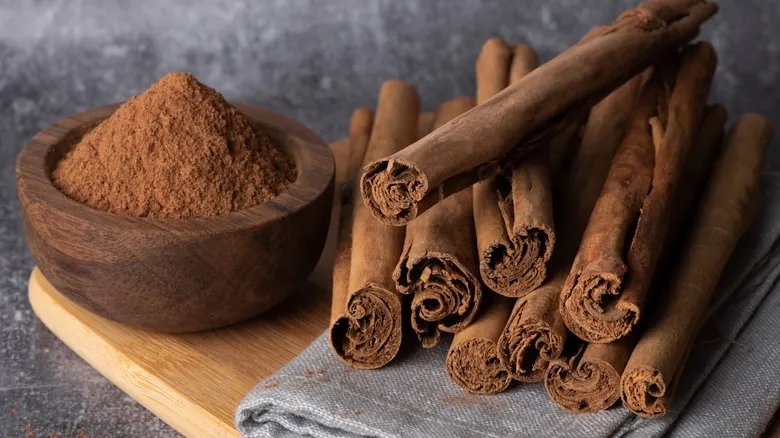
Carrot cake derives its rich, molasses-like hue and delightful flavor from a variety of spices, and omitting them can significantly diminish this charming dessert. Originating in England between the 16th and 18th centuries, carrot cake utilized spices to enhance the natural sweetness of carrots at a time when white or brown granulated sugar was not easily accessible. Common spices included mace and clove, which added brightness to a dessert reminiscent of English pudding.
In modern recipes, spices such as cinnamon, ginger, clove, and even pumpkin pie spice are commonly used. These warming spices enhance and highlight the sweetness of the carrots, so skimping on them may result in a more vegetal flavor.
If you're feeling adventurous, consider experimenting with cardamom, clove, allspice, or freshly grated ginger. Feel free to try various combinations, but whatever you do, don’t overlook the importance of spices.
3. Make sure your carrots are fresh
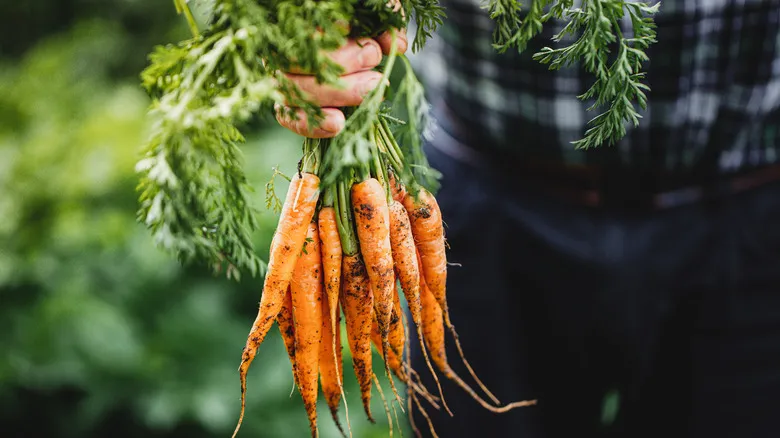
When it comes to any recipe, it's essential to choose the best ingredients possible. You wouldn't use month-old tomatoes from the fridge in your Caprese salad, nor would you opt for mealy or canned Golden Delicious apples for your prized apple pie. Similarly, you definitely don't want old, mushy, or dried-out carrots in your carrot cake.
There are several compelling reasons to use the freshest and highest-quality carrots in your cake. First, fresh carrots provide moisture, and using old or dried-out ones could result in a dry, crumbly cake instead of the moist, dreamy texture you desire. Second, carrots contribute texture to your cake; older carrots may be too mushy or too dry, which won't give you the satisfying bite you want in each layer. Lastly, carrots add sweetness, and using a handful of old ones will negatively impact the flavor. As carrots age, their taste becomes less vibrant.
To ensure your carrots are as fresh as possible, perform a simple "snap" test: if you can bend a carrot more than 45 degrees without it breaking, it's time to get new, fresh carrots. Also, avoid pre-shredded and baby carrots for your cake, as they won't provide the same texture or moisture as freshly grated, larger carrots.
4. Keep an eye on the baking soda ratios
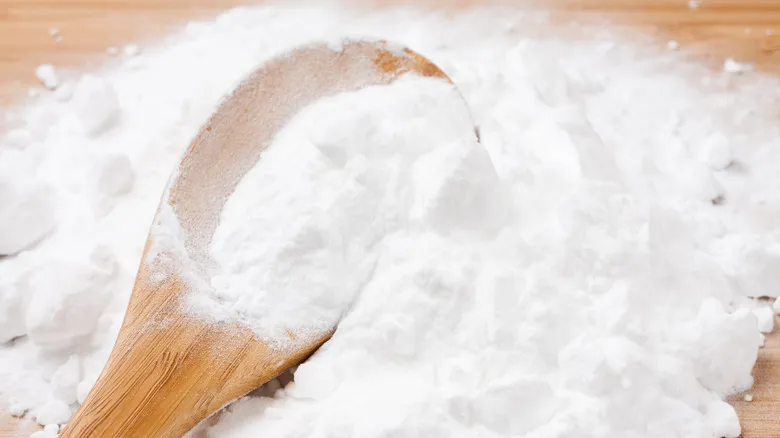
If you're a passionate baker, you know how crucial it is to distinguish between baking powder and baking soda, as well as to use the right proportions of each. When it comes to carrot cake, you're working with a batter that tends to be quite dense and often packed with various mix-ins. Baking soda, a staple ingredient in nearly every carrot cake recipe, plays a vital role in lifting and aerating the batter, resulting in a light and fluffy cake rather than a heavy, dense one. The carbon dioxide released by the baking soda creates bubbles in the batter, contributing to a tender crumb that would impress even Paul Hollywood. In carrot cake, it's especially important to use an adequate amount of baking soda, as the moisture and density of the carrots can weigh the batter down.
To ensure you’re using the right quantity of baking soda in your carrot cake, start with a fresh box of the good stuff. Expired baking soda loses much of its potency, which can prevent you from achieving the airy texture you desire. Additionally, be careful to measure accurately, avoiding any mix-ups between baking soda and baking powder, and stick to the recommended ratios. By following these essential tips for using baking soda, you’ll be on the right track.
5. Oil, not butter, for this batter
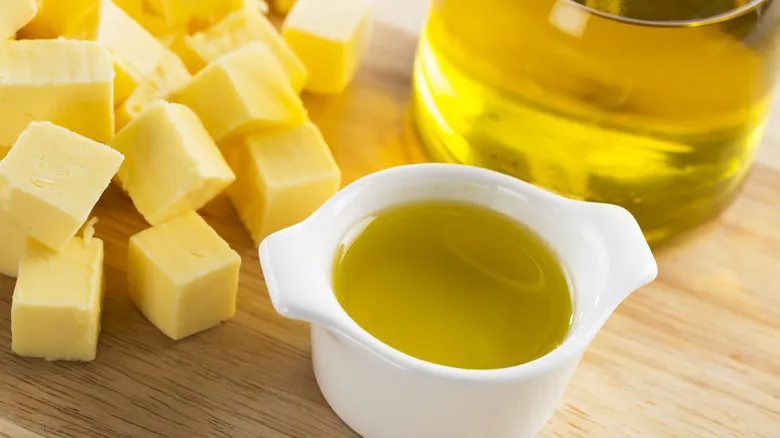
One of the most eye-opening experiences for first-time carrot cake bakers is realizing they’ve mistakenly used butter instead of oil in their batter, or thinking they could enhance their recipe by substituting the lovely, golden dairy product they picked up at the farmers market for the uninspiring vegetable oil sitting in their pantry.
This switch can be a significant error. Butter won’t provide the tender, airy crumb you’re aiming for; oil will, due to its higher fat content. Additionally, butter adds a distinct flavor that can overpower the warm and often subtle spices you’re incorporating into your batter. Opting for a neutral oil like canola or vegetable allows the flavors of the carrots and spices to shine through without being burdened by excessive richness. While vegetable or canola oil may not seem as indulgent, appealing, or comforting as classic butter, for the sake of achieving a delicious, light, and spice-forward cake, it’s best to avoid the dairy.
6. Play this or that with mix-ins
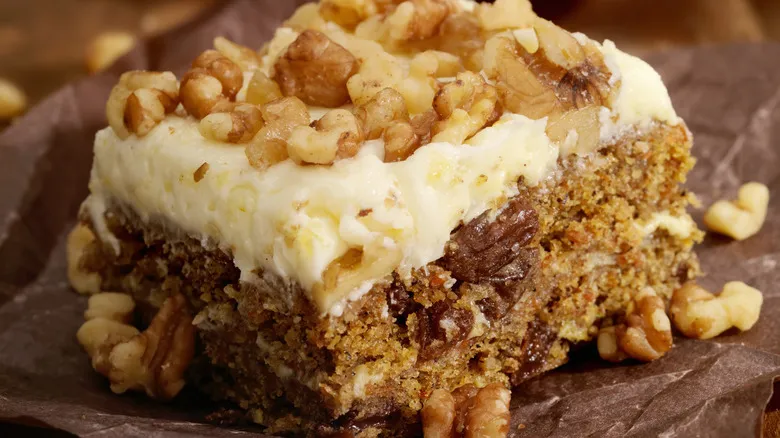
It can be alluring to incorporate a variety of ingredients into your carrot cake. Many recipes feature additions like coconut, pineapple, walnuts, pecans, raisins, currants, and more. However, overloading your carrot cake with too many mix-ins can lead to a disappointing outcome, resulting in a dense, overly rich dessert with clashing flavors.
For instance, if you were to include walnuts, raisins, and coconut, your cake batter would become excessively heavy. The baking soda intended to help your cake rise would struggle against the weight of these numerous ingredients, causing your cake to fall flat (quite literally). This could also result in an overly moist cake, which would have a shorter shelf life and be more susceptible to mold. There are many ingredients you can use to enhance your carrot cake, so consider sticking to one or two to add texture and depth (like fruit or nuts), or keep it simple by adding just a small amount of one ingredient.
7. Use a scale while baking
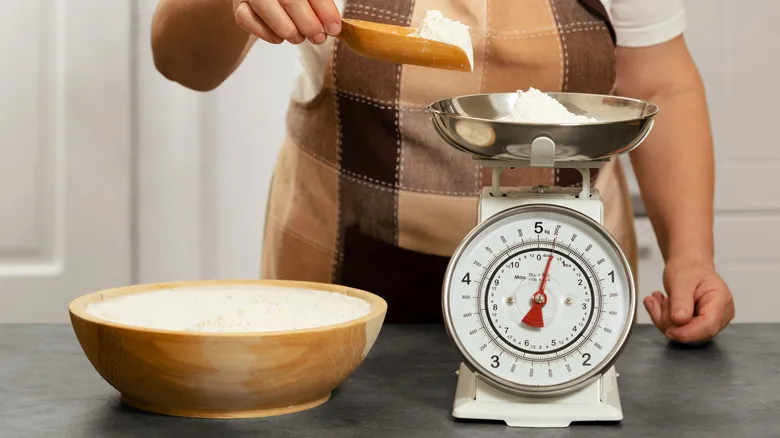
Baking is fundamentally different from cooking; it’s a precise science. To achieve a cake that rises, cookies that spread, or a soufflé that puffs up perfectly, you must adhere closely to the recipe and its ratios. Unlike preparing a pasta dish where you can freely adjust ingredients, baking relies on accuracy.
For this reason, using a scale when making your carrot cake is essential. There are several advantages to this approach. First, a scale provides far greater accuracy than the scoop-and-swipe technique often employed with measuring cups. When you dip a measuring cup into a bag of flour, you might inadvertently create air pockets or compact the flour too much. Conversely, if you use the spoon method to transfer flour into a measuring cup, you risk under-measuring and using less than the recipe requires.
By weighing your ingredients, you can precisely measure the flour, sugar, or spices needed for your carrot cake. This eliminates any guesswork and the need for leveling off; you simply aim for the exact weight specified.
8. Adding nuts? Toast them first
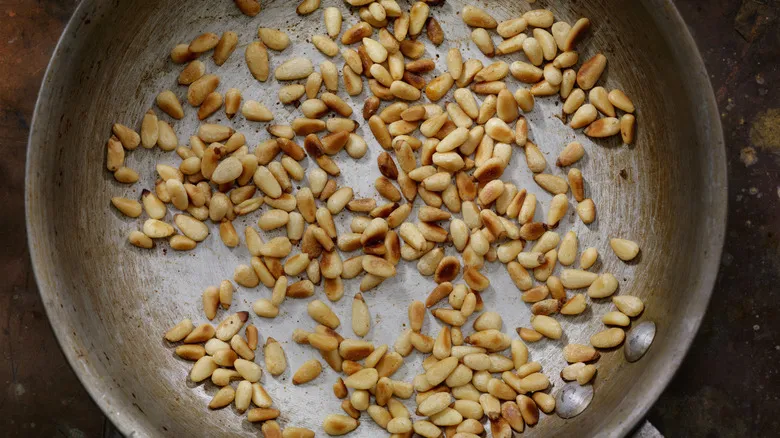
Walnuts, pecans, hazelnuts, and coconut are all beloved enhancements to a traditional carrot cake. They contribute crunch, texture, and a touch of earthiness to this classic dessert. However, skipping the toasting step for any or all of these nuts may leave you and your guests missing out on a depth of flavor that raw nuts simply can't provide.
For instance, incorporating toasted walnuts into your carrot cake can significantly elevate the overall taste. The nuts become crunchier and develop a rich, toasted flavor that contrasts beautifully with the sweetness of the carrots while highlighting the spices in your batter. If you decide to toast your nuts or coconut, the process is quite straightforward. If your nuts are whole, chop them into smaller pieces and place them in a skillet. Cook them over medium heat on the stovetop until they become fragrant, then promptly transfer them to a heat-proof bowl. Be cautious, as nuts can quickly go from perfectly toasted to burnt if left unattended. Once they have cooled slightly, you can either mix them directly into your carrot cake batter or fold them into your frosting.
9. Bake in layers
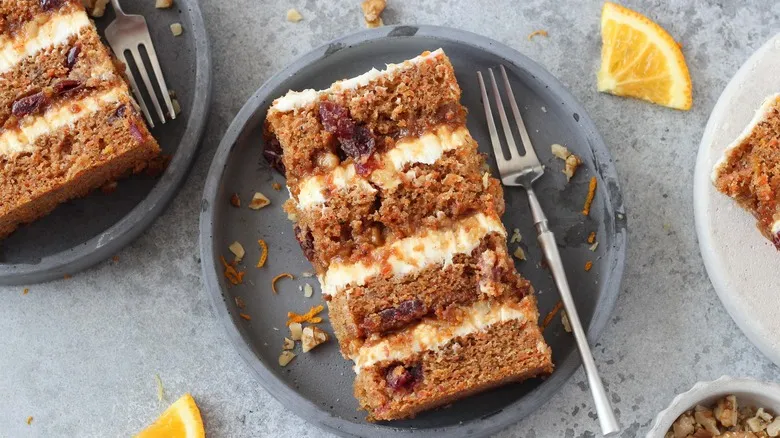
If you're well-acquainted with carrot cake and its delightful variations, you likely know that it’s typically served as a multi-layered cake, often two to three tiers high, with cream cheese frosting between each layer and on the outside. If you prefer to take shortcuts, you might think that the simplest way to achieve those delectable layers is to bake one large cake, let it cool, and then slice it in half or thirds. However, this approach is a common pitfall when it comes to layered cakes.
While the one-cake method might work for drier, lighter cakes, it spells trouble for carrot cake. This dessert is known for its moistness and density, which can make it challenging to cut. Attempting to slice it in half could result in a layer that crumbles or falls apart during assembly. Instead, divide your batter between two cake pans and bake them separately. Once they’ve cooled, layer them with frosting in between. Don’t hesitate to use supports as well; providing extra structure for your carrot cake will yield better results.
10. Be careful about underbaking

A common error when baking a cake is taking it out of the oven too soon. Even though the batter will continue to cook a little in the hot cake pan after being removed from the oven, taking it out 10 minutes before the recommended baking time can lead to a dense center and potentially undercooked insides. With carrot cake, many home bakers are misled into believing the cake is finished early because the batter is already thick and has a brownish hue.
To prevent this baking blunder, always conduct the toothpick test before removing your cake from the oven. Simply insert a wooden skewer or toothpick into the center of the cake. If it comes out clean, it’s ready to be taken out. If it has batter on it, leave the cake in the oven. Additionally, try to avoid frequently opening and closing the oven door, as this allows heat to escape. If you’re eager to check on your cake’s progress, keep the oven light on instead.
11. Cream cheese frosting is the way to go
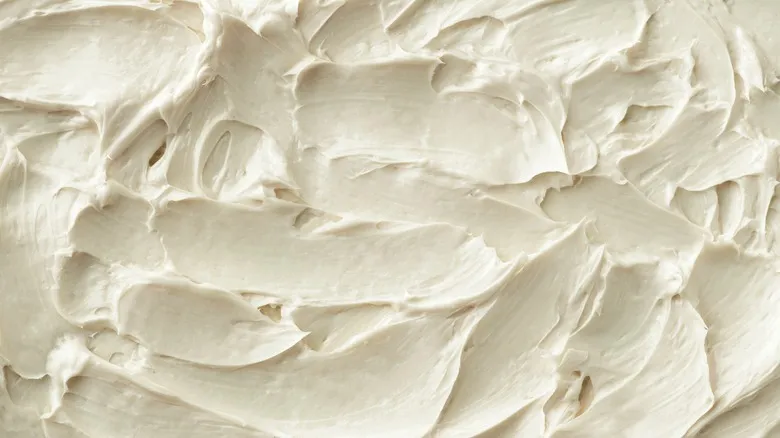
You can call us dull, traditionalists, or whatever else you like — but we firmly believe that cream cheese frosting and carrot cake are a match made in heaven. The tangy yet sweet, thick frosting complements the spiced cake perfectly, adding just the right balance of flavor without overwhelming it with sweetness or savoriness.
If you're aiming to whip up your own ideal cream cheese frosting, here are a few tips to ensure it turns out as rich and creamy as possible. First, be sure to use butter and cream cheese that are at room temperature. Using them straight from the fridge can result in lumps when you try to mix them, and nobody wants a lumpy frosting on a gorgeous cake. Second, allow your frosting to sit at room temperature for one to two hours before you start frosting your cake. Cold frosting can be difficult to spread and may tear the cake. Keep in mind that with cream cheese frosting, less is often more, and the timeless appeal of this classic combination is undeniable.
12. Frost after its cool
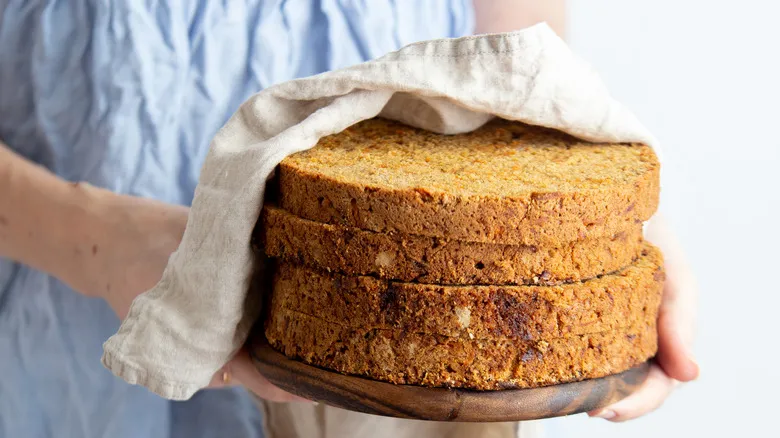
Once your carrot cake is baking in the oven and your frosting is prepared and set aside to reach room temperature, you’re probably getting ready to frost your cake. However, frosting involves a bit more than just spreading on the sweet mixture. There are some essential guidelines to follow to achieve a visually appealing and delicious carrot cake.
When it comes to frosting, patience is key; you must wait until your cake is completely cool. Frostings typically consist of butter, sugar, and other cream or dairy-based ingredients (essentially fats), so applying them to a hot or warm cake will cause them to thin out, melt, and slide off. After your frosting has reached room temperature, allow your cake to cool for two to three hours after taking it out of the oven. Many bakers also apply a crumb coat before adding the final layer of frosting to prepare the cake for the finishing touches.
13. Say yes to citrus
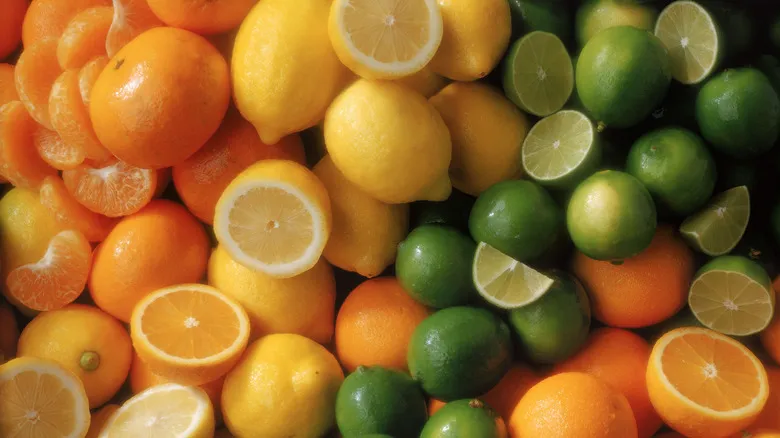
As a final tip, consider incorporating a hint of citrus into your carrot cake batter or frosting. The earthy sweetness of the carrots pairs beautifully with the tanginess of cream cheese frosting, while citrus notes—such as oranges, tangerines, grapefruit, or lemon—add a refreshing brightness that enhances the cake's richness.
Incorporating citrus into your batter also deepens the flavor of warming spices like cinnamon and clove. You can achieve this by adding either juice or zest to your mixture.
No matter which citrus fruit you choose, you'll love the extra flavor boost it brings to your carrot cake. For a simple way to experience this combination, try this orangey carrot cake recipe. Once you've mastered that, feel free to experiment with other citrus options like bergamot, tangerine, or even yuzu. We might even suggest that adding citrus elevates carrot cake to a breakfast treat!
Recommended
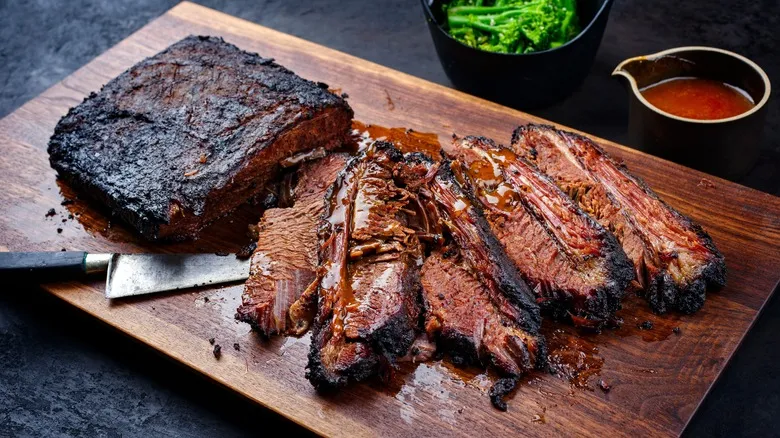
The Crucial Mistake You're Probably Making When Smoking Brisket
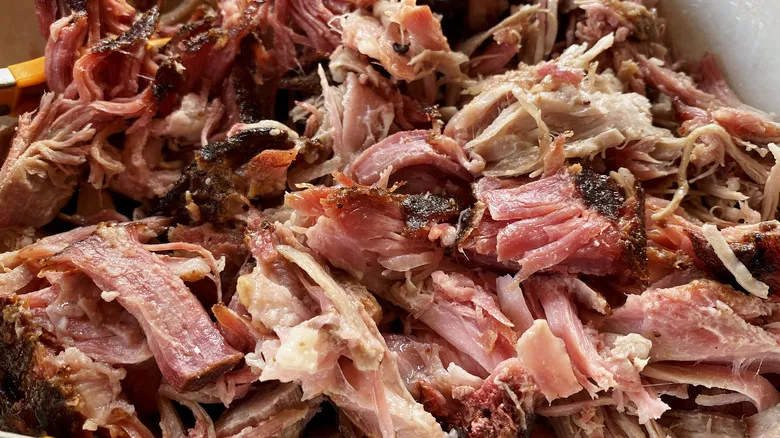
The Best Way To Reheat Pulled Pork (Without Drying Out The Sauce)
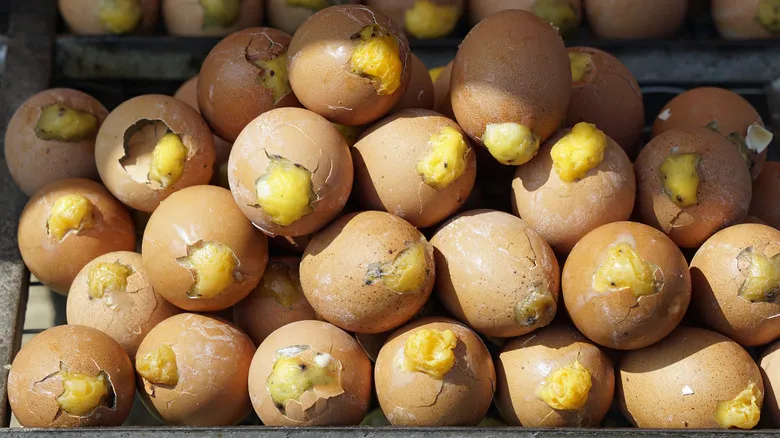
Yes, You Can Grill Eggs — Here's How
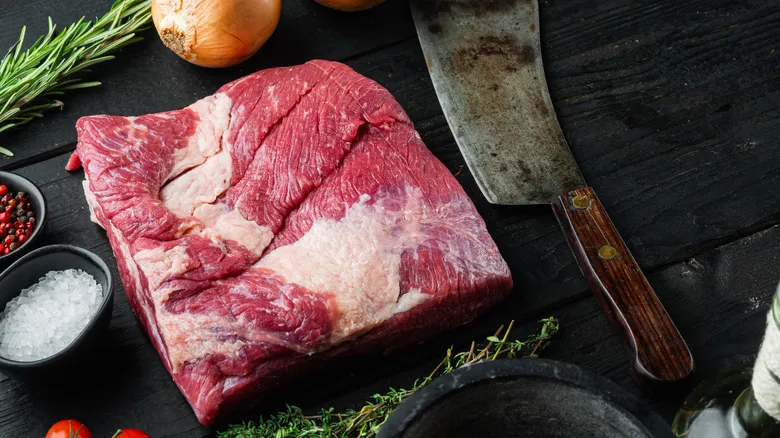
Can Someone Explain What A Deckle Of Beef Means?
Next up

